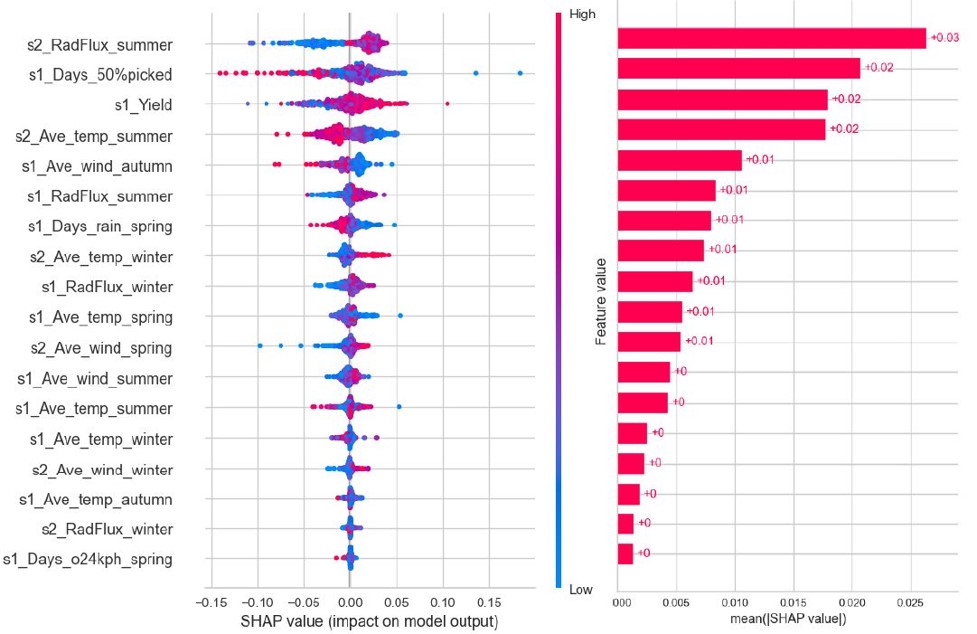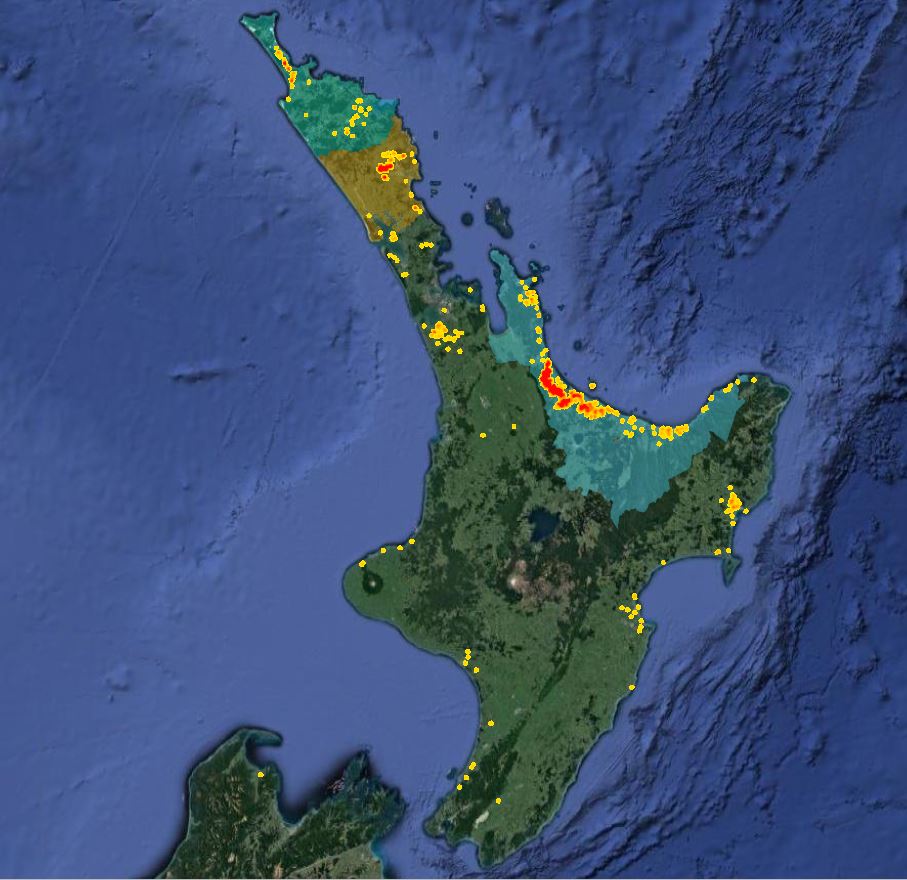Industry data analysis
Key findings

- SHAP values that indicate influence of factors on orchard yield. Right hand graph indicates importance of factors with higher values being of higher importance. Left hand graph indicates whether high values (red) or low values (blue) of factors are associated with improved yield (positive SHAP value) or decreased yield (negative SHAP value). S1 refers to factors in the season preceeding harvest and S2 indicates factors in the same season as harvest.
- 30% of orchard variability explained by weather and historic production.
- Later harvests negative for return crop.
- High yielding orchards tend to stay high yielding but alternate bearing evident.
- Summer conditions seem to be more important than anticipated.

- Avocado orchard density 2020-21 across the North Island. Red areas indicate a higher density of orcahrds than yellow areas.
Background and introduction
A range of factors are known to influence productivity in any one season with weather being a significant one. Despite recognition that weather has a large impact on productivity it isn’t clear how the different components of weather interact with each other, and orchard factors, to result in the final crop. Investigations of individual parameters has provided useful information but thresholds from these studies do not always translate consistently to orchard production. For example, low spring temperatures anecdotally are thought to contribute to lower yields. Low overnight temperatures delay flower opening1, slow pollen tube growth and can damage flower ovules at certain stages of development2,3 but an analysis of temperatures alone showed no significant impact on orchard productivity4. Weather also impacts bee activity5 with cold rainy conditions reducing the chance of pollen transfer. Tree status has also been shown to influence the success of fruit set with flower containing higher levels of boron and carbohydrates more likely to successfully set fruit6. The carbohydrate stores of avocado trees fluctuate with alternate bearing and influence productivity7. Previous seasons crops have a significant influence on carbohydrate reserves of trees with high crop loads depleting reserves. Late harvest in April has also been shown to negatively impact return flowering8.
NZ Avocado has detailed production data including yield, harvest dates, fruit size and geographical location of individual orchards. Combining this production data with similarly granular weather data could produce powerful insights into the interaction of weather and production parameters on orchard production. These insights would help direct research and extension effort for growers, providing the best information to mitigate climate factors and help guide decision making about future mitigation strategies in a changing climate. The value of longer term mitigation strategies such as breeding programmes would be more easily assessed against alternative strategies such as changes in growing systems.
Analysing multiple weather and production parameters simultaneously to understand how they combine to influence the orchard production is not simple. Machine learning is an area of science that can help with analysis using algorithms and statistical models to process the data and identify patterns and correlations within large data sets that are not immediately obvious when looking at an individual orchard level or at industry level statistics.
This project aims to identify the interaction of factors that influence orchard productivity through novel analysis techniques, combining large industry data and weather data sets across all main growing regions.
